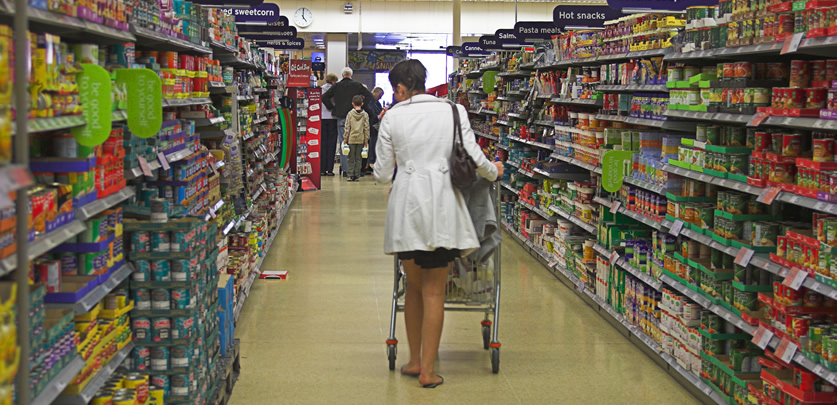03
April 2019
Food Inflation at Highest Rate in Over 5 Years
Food prices in the UK are growing at their fastest rate in over five years, according to the British Retail Consortium and market research firm Nielsen.
The figures from the latest BRC-Nielsen Shop Price Index revealed that UK food inflation hit 2.5% in March, up from 1.6% in February. It is the highest rate of food inflation since November 2013. Inflation of non-perishable food saw an even higher increase, from 1.5% in February up to 3.4% last month. Shop price inflation overall was also at its highest rate since March 2013, hitting 0.9% last month and up from 0.7% in February.
The BRC has suggested that extreme weather experienced in the UK last year has contributed to the rising prices. Crops were initially hit by the ‘Beast from the East’ last February, followed by heavy rain and flooding in April, and finally the prolonged heatwave experienced over the summer.
This has caused an increase in the prices of many homegrown vegetables, such as onions, potatoes and cabbages. A global rise in the price of cereal and bread has also contributed to the inflation. Other factors that have pushed up prices include increases in the cost of both alcoholic and non-alcoholic drinks.
“March saw shop price inflation rise to its highest level in six years, driven primarily by a sharp spike in non-perishable food inflation,” said Helen Dickinson, chief executive of the BRC. “Increases in global commodity prices and adverse weather events put upward pressures on the wholesale prices of many foodstuffs which, coupled with rises in the cost of alcoholic and non-alcoholic beverages, pushed food inflation from 1.6% in February to 2.5% in March.”
The BRC warned that should the UK leave the EU without a deal, then food prices will be expected to rise even further. The government have been urged to find a resolve to the deadlock and agree on a trade deal in order to protect consumers.
“The bigger threat to food inflation remains the risks of a chaotic no-deal Brexit, which would lead to higher prices and less choice on the shelves,” added Dickinson. “In order to avoid this scenario, parliamentarians from all parties must find a compromise that can command a majority in the House of Commons.”
Mike Watkins, head of retailer and business insight at Nielsen, said: “The upwards pressure on pricing continues across food retailing and a key driver this month was inflation in ambient food and drink. With shoppers looking to stretch their budget for the weekly grocery shop this will not help volume growth, which has been slowing since the start of the year. For many high street fashion, home and outdoor retailers prices are not increasing, so good news for shoppers as the end of season ranges sell through.”
As well as higher food prices, consumers have also been hit recently with a range of price hikes. Council tax and TV licence fees both went up in April, as well as gas and electricity bills for millions of customers on standard variable tariffs.





